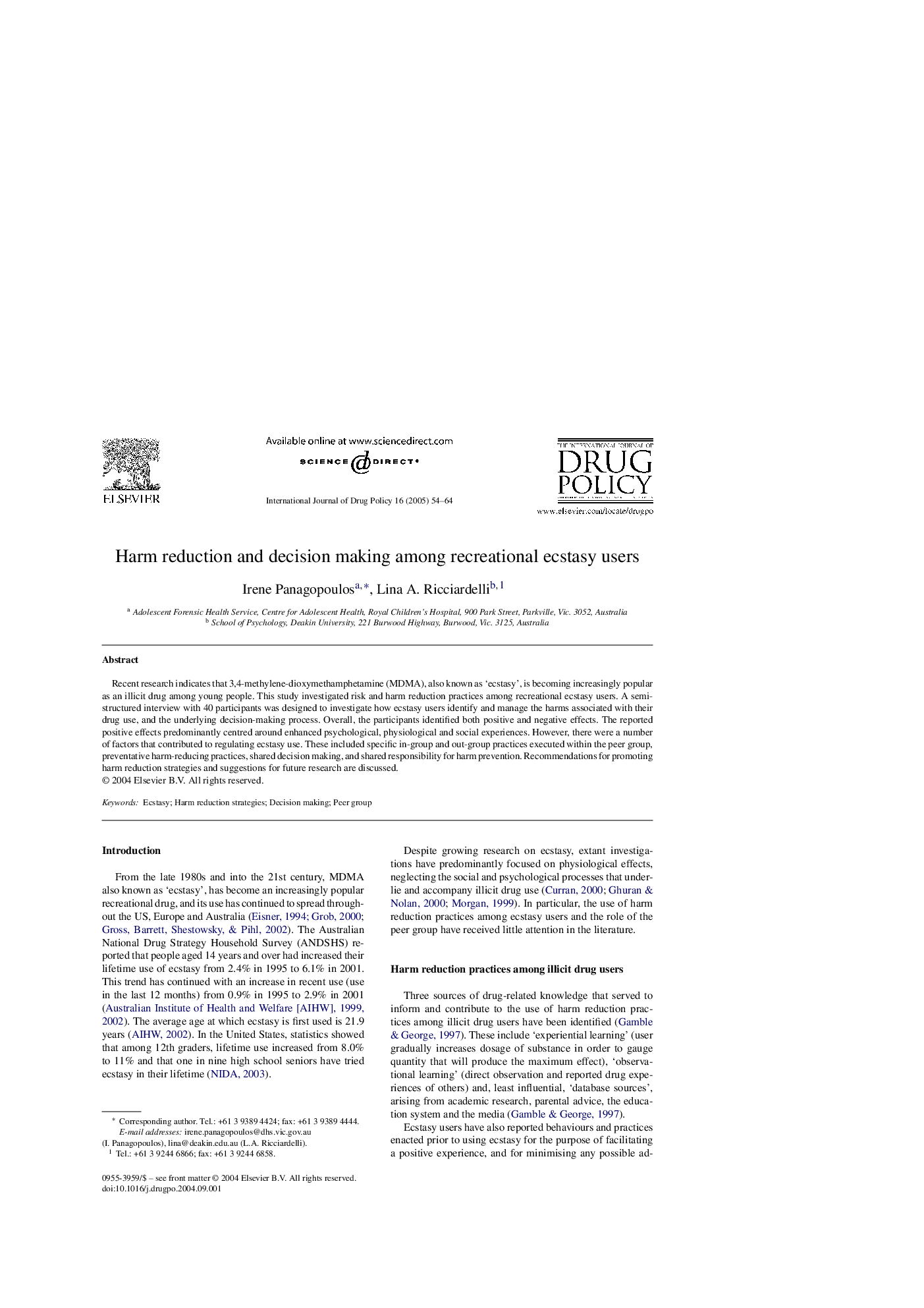| Article ID | Journal | Published Year | Pages | File Type |
|---|---|---|---|---|
| 9737209 | International Journal of Drug Policy | 2005 | 11 Pages |
Abstract
Recent research indicates that 3,4-methylene-dioxymethamphetamine (MDMA), also known as 'ecstasy', is becoming increasingly popular as an illicit drug among young people. This study investigated risk and harm reduction practices among recreational ecstasy users. A semi-structured interview with 40 participants was designed to investigate how ecstasy users identify and manage the harms associated with their drug use, and the underlying decision-making process. Overall, the participants identified both positive and negative effects. The reported positive effects predominantly centred around enhanced psychological, physiological and social experiences. However, there were a number of factors that contributed to regulating ecstasy use. These included specific in-group and out-group practices executed within the peer group, preventative harm-reducing practices, shared decision making, and shared responsibility for harm prevention. Recommendations for promoting harm reduction strategies and suggestions for future research are discussed.
Keywords
Related Topics
Health Sciences
Medicine and Dentistry
Psychiatry and Mental Health
Authors
Irene Panagopoulos, Lina A. Ricciardelli,
